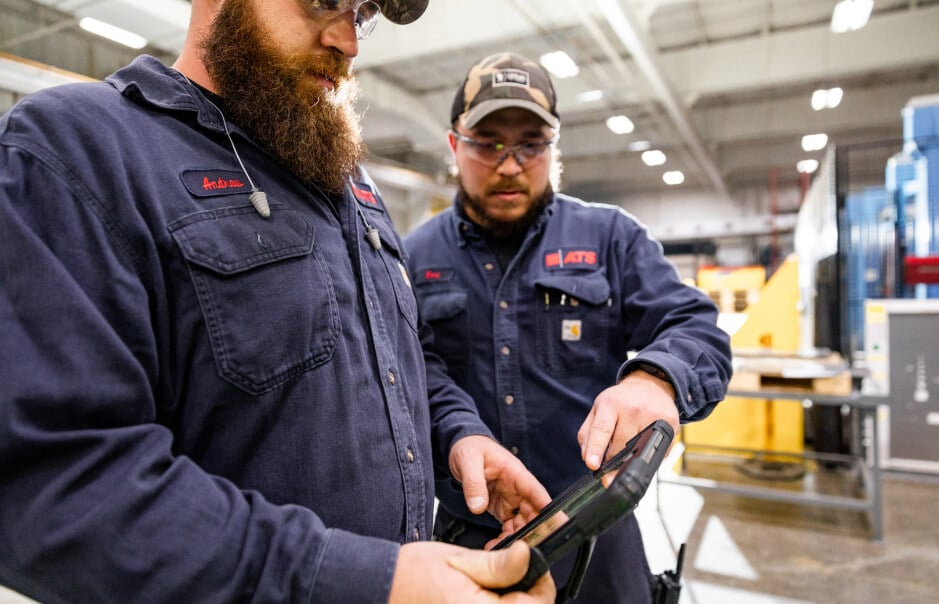The people closest to production are usually best acquainted with the problems there. They see what’s needed but they often lack the authority or budget to introduce ideas.
For example, consider the maintenance technicians who see the potential for machine health monitoring systems. They know this would reduce downtime and visits to “problem” equipment, but they’re not in a decision-making position. Instead, they have to “sell” the idea to others. Here are some ideas to help achieve stakeholder buy-in to innovative ideas.
Understanding the stakeholder’s perspective
Anyone who would be affected by introducing something new into production is a stakeholder. This ranges from people working on the plant floor and the maintenance technicians who keep the machines and lines running, to operations managers, the quality function and even sales teams.
Identifying key decision-makers and their priorities
Few stakeholders have decision-making authority, and these are the people who need to be won over first. Start by identifying who they are, then figure out what’s important to them. This usually relates to how they are measured, so it might be daily output numbers, OEE measures, quality costs or other metrics.
The gap between ground-level insights and executive-level decisions
As businesses grow larger, decision-makers have less direct involvement with the plant floor and information passed to them is filtered and summarized. Consequently, people in hands-on roles should understand that many decision-makers will lack knowledge about current activities and how they might benefit from innovative ideas.
Building the case for manufacturing innovation
Persuading decision-makers to implement new technology begins with understanding the problem and formulating a solution. From there, the process continues by putting together a proposal, in terms the decision-makers can understand.
The four steps are:
1. Assess needs
Define the problem. For example, it could be frequent stoppages on a production line or performing unnecessary maintenance work dictated by a scheduling system.
2. Quantify benefits
Determine the result of solving the problem in numerical terms. If stoppages are reduced, what would that mean for OEE? Would it reduce the need for overtime work?
In the case of machine health monitoring, would it make more time available to maintain other equipment? Could it enable the adoption of predictive rather than preventive maintenance, and if so, what would the impact be?
3. Address common objections and concerns
Whenever changes are proposed, especially if it relates to new technology, the people affected — the stakeholders — become concerned. This relates to how they will be affected, and the possible effects on production operations and the wider business.
Getting buy-in from stakeholders means anticipating these concerns and determining how they can be addressed, before presenting the proposal. Identify how their jobs and the activities they are responsible for, will be improved, then share this when the proposal is presented.
4. Gathering data
Decision-makers will want quantification of the problem and the benefits. For example, for a machine health monitoring proposal, they will want to know how much time is lost now to breakdowns and how much time is spent on maintenance.
Getting these numbers requires data collection. The numbers might already be available, perhaps in the CMMS, but additional studies and logs may strengthen the case.
Communicating effectively with decision-makers
These stakeholders face many demands on their time, so it’s important to plan how the proposal will be pitched.
Craft a compelling narrative for innovation
Stories are compelling. Before sharing summary data, consider relating a specific problem that the proposal would address. This might begin with describing a situation where a breakdown occurred despite carrying out scheduled preventive maintenance, and then explaining how predictive maintenance would have prevented the problem.
Strategic timing and contextualization of proposals
Having understood the problem and the form a solution could take, decision-makers will want to hear how implementation could proceed. Share the steps involved and their timing, along with how the solution would impact other aspects of the business.
Leveraging pilot programs for demonstrable results
A pilot exercise is an effective way of countering concerns about risks. In the case of a machine health monitoring proposal, a predictive maintenance pilot program can identify unforeseen implementation challenges and help quantify benefits. It can also help win over stakeholders outside the decision-making process.
Designing impactful pilot studies
The window to demonstrate benefits will be small and visibility high, so it’s important to pick a target area where significant improvement is quickly attainable.
Collecting and analyzing pilot data
Determine the data decision-makers want to see to assess benefits and potential ROI. Put systems in place to collect this from the outset.
Transitioning from pilot to full-scale implementation
Be ready for management to green-light a wider rollout of the solution. Have plans in-hand, along with required expenditures. Be sure to estimate the potential predictive maintenance cost savings.
Incentivize collaborative strategies and inclusive planning
A powerful way of ensuring stakeholder buy-in is to involve the team in the project from the outset. This helps overcome concerns and change resistance.
Steps include:
- Create cross-functional innovation teams: Including broader perspectives increases support and almost certainly results in greater project success.
- Involve stakeholders in the planning process: They can help identify potential barriers while there is time to develop solutions without delaying the project.
- Maintain open channels of communication: Avoid the spread of rumors by sharing regular updates and inviting stakeholders to contribute their ideas.
Partner with experts
Innovating in manufacturing has many challenges. These can be addressed by involving people with in-depth knowledge and experience of the problems and the solutions.
In the case of machine maintenance, ATS has a track record of helping manufacturers improve effectiveness while managing costs. Our services address all aspects of asset management, from MRO to parts repairs. Our predictive maintenance services help reduce downtime while boosting metrics such as OEE. Contact us to learn more.


